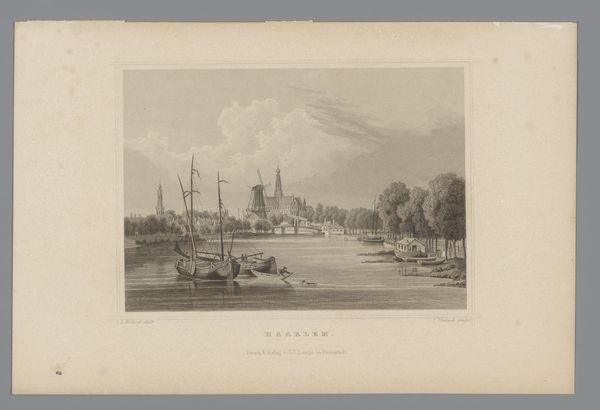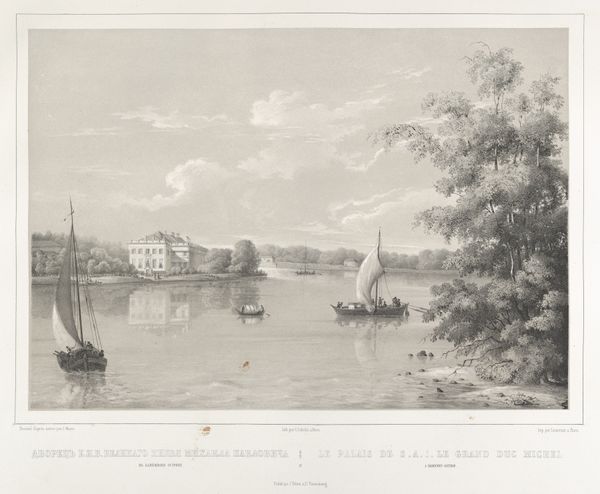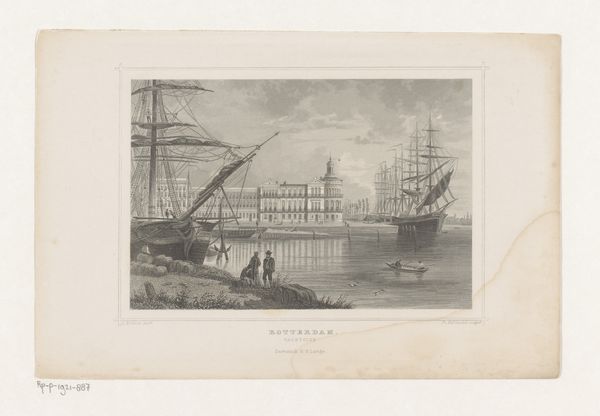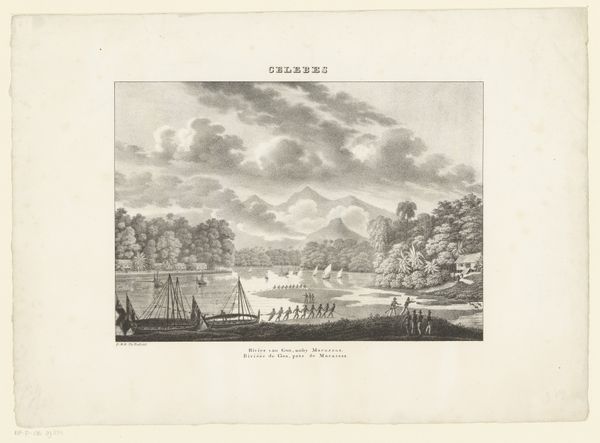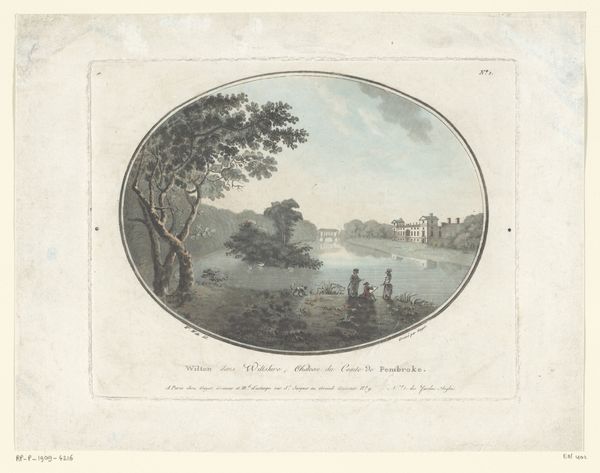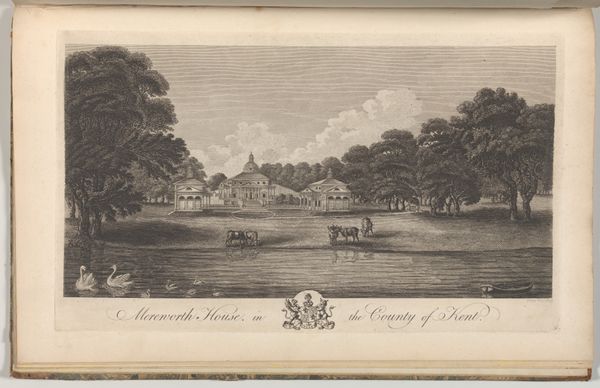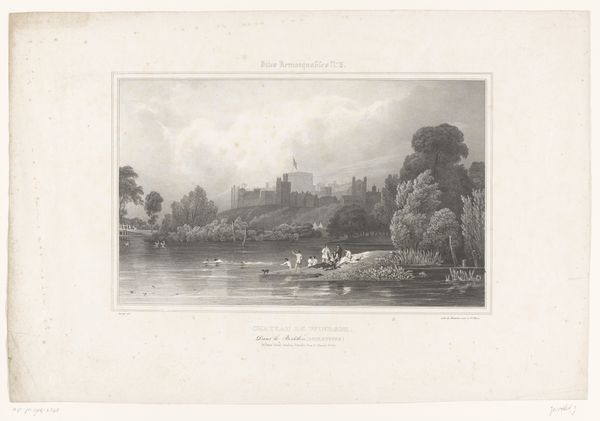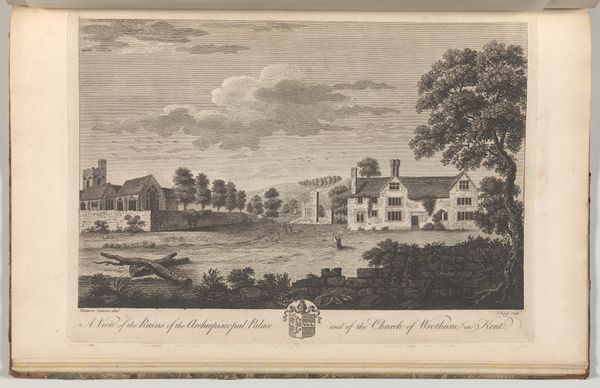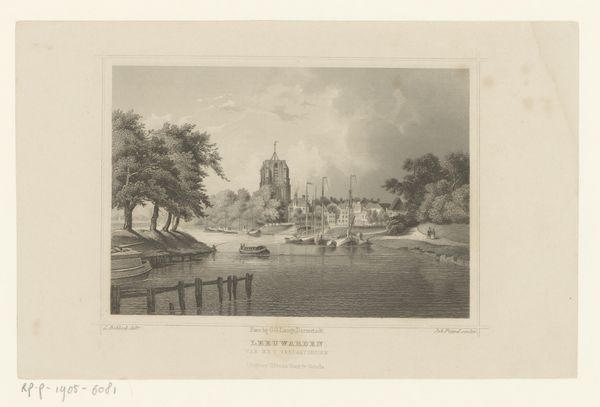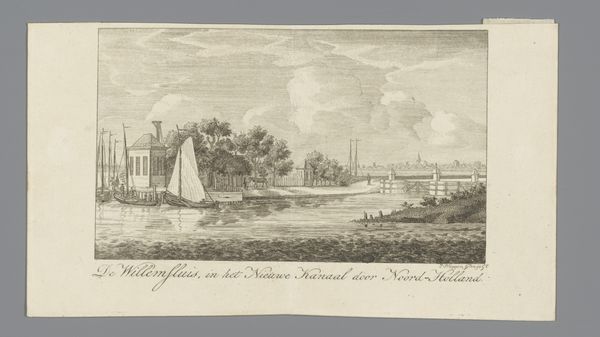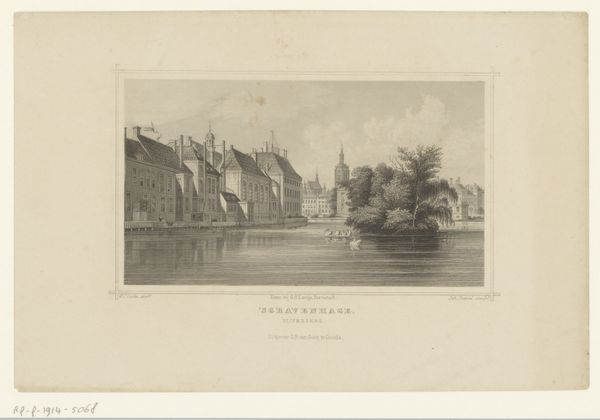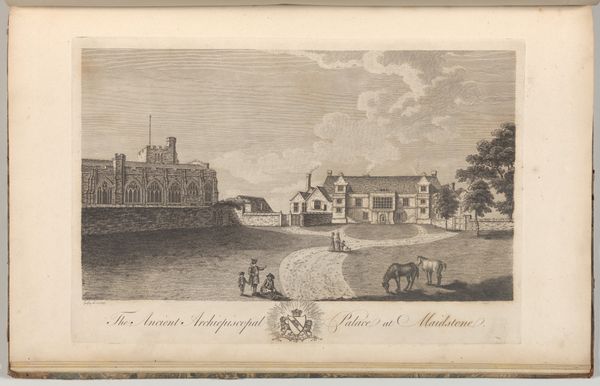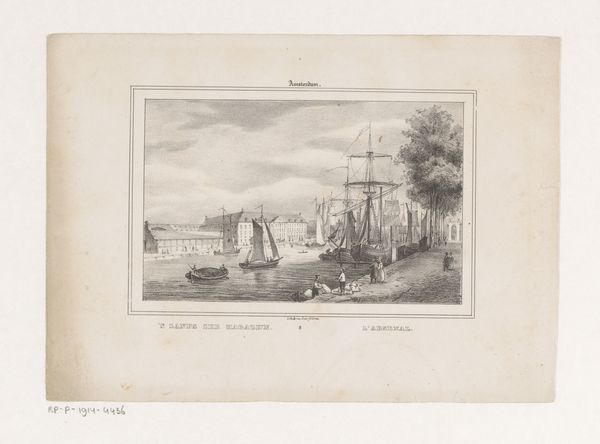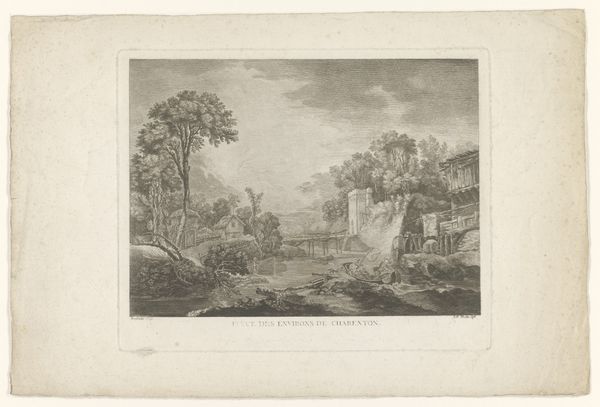
print, etching
# print
#
etching
#
landscape
#
river
#
romanticism
#
cityscape
#
realism
Dimensions: height 168 mm, width 254 mm
Copyright: Rijks Museum: Open Domain
This is a print of the Leidsepoort in Amsterdam by Franz Hablitschek. It was made using a technique called steel engraving, a process that involved cutting an image into a steel plate, which was then inked and used to make multiple impressions. Notice the incredible detail achieved through this method: from the reflections in the water, to the sails of the boats, to the architecture in the background. Steel engraving emerged in the early 19th century, just as industrialization was changing the pace of life. Unlike earlier copper engravings, steel was much harder, and allowed for larger print runs and finer lines. This print is part of a democratizing movement, where images could be reproduced more efficiently and distributed widely. Consider the labor involved. A skilled engraver would have spent hours meticulously carving into the steel, producing an image that could then be replicated countless times. The print, once made, could then be sold and distributed, allowing more people to access and appreciate art. The image is not only aesthetically pleasing, but a testament to the changing processes of production and consumption in the 19th century.
Comments
No comments
Be the first to comment and join the conversation on the ultimate creative platform.
